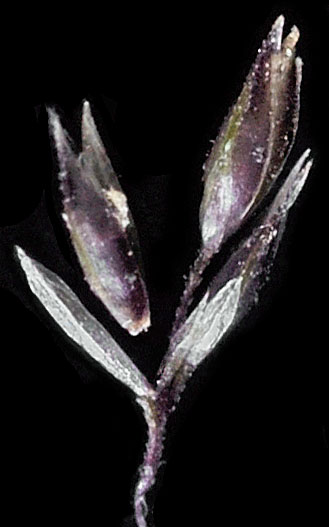Sporobolus indicus
Sporobolus cryptandrus
sand dropseed
Sheaths open, mostly glabrous, with hairs at the throat;
ligules 0.5-0.7 mm. long;
blades involute, 2-4 mm. broad, mostly smooth, but with long, soft hairs along the margins bordering the ligule.
Inflorescence a moderately-open panicle 10-20 cm. long, partially included in the sheath, the branches simple to again branched, spikelet-bearing to near the base, stiffly ascending;
spikelets 1-flowered;
glumes 1-nerved, acute, unequal, the first about 1 mm. long, the second twice as long;
lemma 2-2.5 mm. long, acute, 1-nerved, awnless and glabrous, about equaled by the 2-nerved palea.
Sporobolus indicus
Sporobolus cryptandrus
Occurring east of the Cascades crest in Washington; British Columbia to southern California, east across most of North America to the Atlantic Coast except in the extreme southeastern U.S.
- Local floras:
BC,
CA,
OR,
WA
- Local Web sites:
CalFlora,
CalPhotos,
Flora NW,
PNW Herbaria
WildflowerSearch
iNaturalist (observations)
USDA Plants Database
- LBJ Wildflower Center
- SEINet
- Plants of the World Online
- Encyclopedia of Life
- Wikipedia
- Google Image Search


